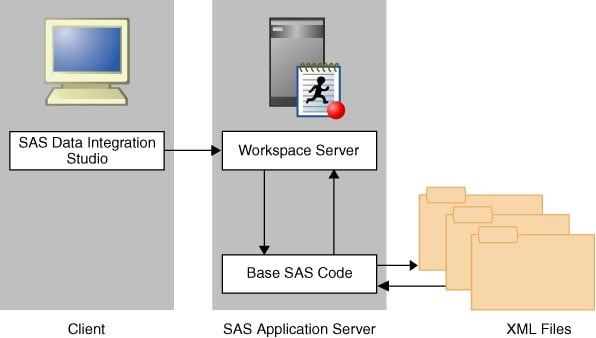XML Data
The XML LIBNAME engine works
in a way similar to other SAS engines. A LIBNAME statement is executed
so that a libref is assigned and an engine is specified. That libref
is then used throughout the SAS session.
Instead of the libref
being associated with the physical location of a SAS library, the
libref for the XML engine is associated with a physical location of
an XML document. When you use the libref that is associated with an
XML document, SAS either translates the data in a SAS data set into
XML markup or translates the XML markup into SAS format.
The XML
LIBNAME engine can read input streams from a Web service input and
write an output stream to a Web service output. The XML LIBNAME
engine supports reading XML files in complex structures using XMLMaps.
An XMLMap is a user-defined file that contains XML tags that tell
the XML LIBNAME engine how to interpret an XML document. XMLMaps are
defined using the SAS XML Mapper product. For additional information,
see the SAS XML LIBNAME Engine: User's Guide.
XML files are written by the XML Writer transformation provided by
SAS Data Integration Studio. The XML LIBNAME engine supports Output
Delivery System (ODS) tag sets; XMLMaps are not supported for writing.
The XML Writer transformation in SAS Data Integration Studio is shipped
with a sample ODS tag set, if needed. An output XML document can either
be:
